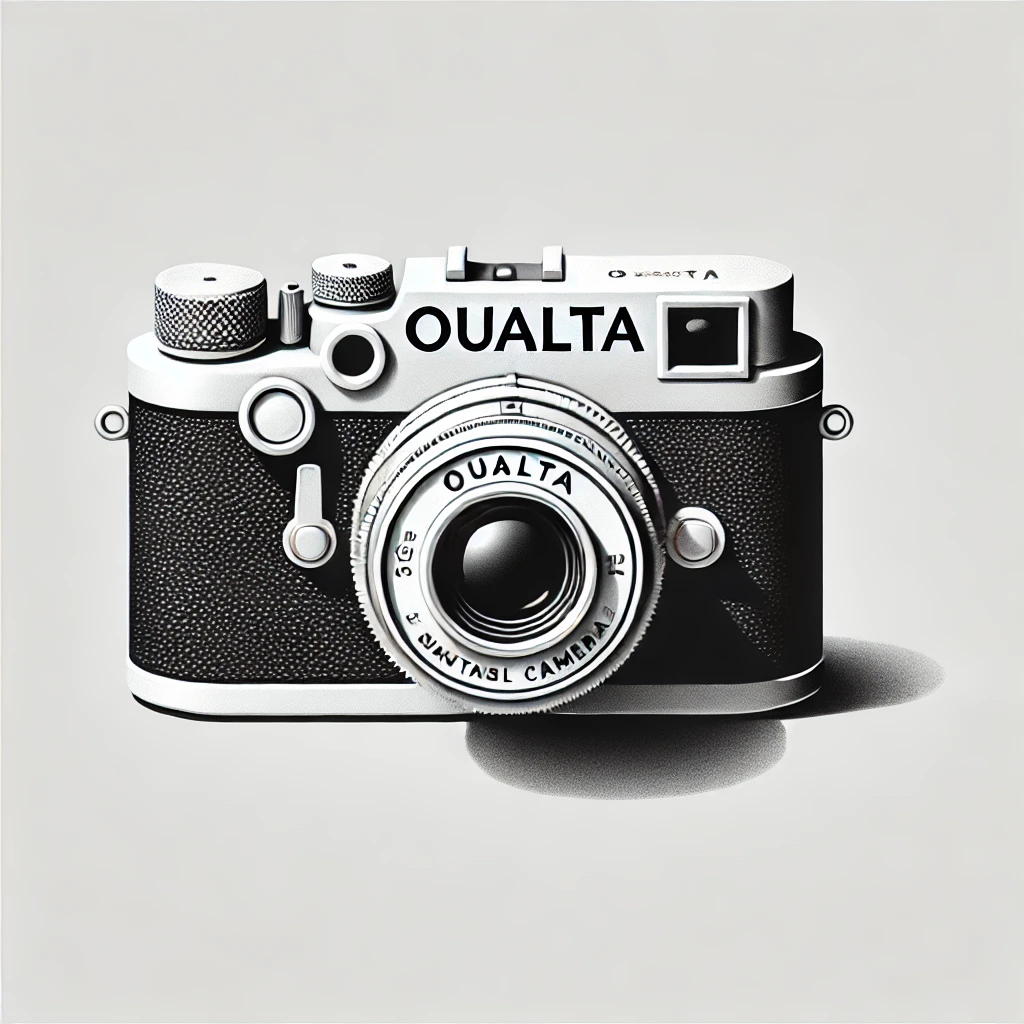In photography, different camera models offer various features tailored to specific needs. Among these options, one that is gaining attention is the camera outta Spanish. While the term might sound unfamiliar to some, it refers to a category of cameras designed with specific features that make them particularly effective for certain types of photography. Whether you are a seasoned photographer or a beginner, understanding the ins and outs of these cameras is essential to making an informed decision when selecting the right gear.
In this blog, we will explore the Spanish definition of a camera, its most common uses, and the frequently asked questions surrounding this particular type of camera. We will also explore technical details, functionality, and why it’s gaining popularity in amateur and professional photography scenes.
What Does “Camera OuAlta Spanish” Mean?
At first glance, the camera is out of Spanish for a specific brand or model. However, “Salta” is a misinterpretation or typo of the word “alta,” which translates to high or elevated in Spanish. Therefore, “camera alta” roughly translates to high-quality or advanced cameras. The term refers to cameras that offer exceptional performance, often including features such as high resolution, advanced lens systems, and superior image processing capabilities.
Spanish-speaking photographers might use this term when discussing premium or high-end cameras, particularly in the context of digital single-lens reflex (DSLR) cameras, mirrorless systems, or advanced compact cameras.
These cameras are designed for users who require high-quality image capture, especially for professional or high-demand photography situations. Some of the best-known camera brands in this category include Canon, Nikon, Sony, and Fujifilm, all of which produce high-quality cameras that fit the “camera alta” category.

Key Features of a Camera OuAlta Spanish
Now that we’ve established what camera outta Spanish refers to, we must look at the key features that make these cameras stand out. While there is no one-size-fits-all, premium cameras generally share a few common characteristics:
High Image Resolution
One of the primary benefits of a camera alta is its ability to capture high-resolution images. These cameras typically feature full-frame or larger crop sensors, allowing them to capture more detail, resulting in sharper and more vibrant images. A camera with high resolution is handy for photographers who need to print large-format photos or work with images that require cropping.
Advanced Lens Compatibility
Another characteristic of camera alta models is their compatibility with advanced lenses. Many premium cameras support interchangeable lenses, allowing users to choose the best lens for their needs—whether a wide-angle lens for landscapes or a fast prime lens for portraiture. Swapping lenses gives photographers greater flexibility and control over their creative work.
Superior Low-Light Performance
High-quality cameras, such as those in the camera out Spanish category, offer superior performance in low-light conditions. This is achieved through larger sensors and advanced noise reduction algorithms, making these cameras ideal for shooting in dimly lit environments, such as weddings, concerts, or indoor events. High-quality cameras ensure your images remain crisp and clear, even when light levels are not ideal.
Enhanced Autofocus Systems
Premium cameras are also equipped with advanced autofocus systems, which ensure fast and accurate focusing. Whether you are capturing fast-moving subjects in sports or wildlife photography or need precise focusing for a still portrait, these cameras can quickly lock onto the subject. Some high-end models also offer eye-tracking autofocus, which ensures sharp focus on a subject’s eyes, ideal for portrait photographers.
Build Quality and Durability
Camera alta models are durable and often weather-sealed, making them ideal for outdoor photography and travel in harsh conditions.
5 Most Frequently Asked Questions About Camera OuAlta Spanish
What Is the Difference Between a Camera Alta and a Regular Camera?
The main difference between a camera alta and a regular camera lies in the quality and performance features. While a regular camera might be a budget-friendly option for casual photographers, a camera alta is intended for professionals or serious enthusiasts.
- Resolution: Camera alta models generally offer higher resolution sensors, resulting in sharper images.
- Lens Compatibility: Premium cameras often offer interchangeable lenses and better support for specialty lenses.
- Low-Light Performance: High-end cameras perform better in low-light settings with less noise.
- Build Quality: A camera alta is typically more durable and weather-sealed, which is ideal for professional shoots in challenging environments.
Are Cameras Alta Suitable for Beginners?
While camera alta models offer advanced features that professionals love, they can still be suitable for beginners, depending on the individual’s commitment to learning photography. However, beginners should be prepared for a steep learning curve when using these types of cameras, as they come with a wide range of features that might initially be overwhelming.
For beginners, cameras in this category often offer automatic modes that help new users get started while gradually learning manual controls. It’s worth noting that many beginners prefer to start with more user-friendly models before stepping up to a camera alta.
for more info
Do I Need a Full-Frame Camera for Professional Photography?
Professional photographers often favor a full-frame camera because it provides a broader field of view, better depth of field control, and superior low-light performance. However, you do not necessarily need a full-frame camera to produce professional-quality photos.
Many photographers still achieve excellent results with crop-sensor cameras, especially those in the camera alta category, which offer exceptional features at a lower price than full-frame models. Choosing between a crop sensor or a full-frame camera depends on the photographer’s specific needs and budget.
What Are the Advantages of Using Mirrorless Cameras Over DSLR Models?
Mirrorless cameras are becoming increasingly popular in the camera alta category, as they offer several advantages over traditional DSLR models:
- Compact Size: Mirrorless cameras are generally smaller and lighter than DSLRs because they don’t have the mirror box system found in DSLR cameras.
- Faster Autofocus: Mirrorless cameras tend to have speedier autofocus systems due to their on-sensor phase-detection technology, making them ideal for action and video recording.
- Silent Shooting: Mirrorless cameras have a quiet shutter mode, making them perfect for events like weddings or wildlife photography, where silence is essential.
However, DSLRs still have advantages, such as superior optical viewfinders, longer battery life, and a wider range of lenses. The choice between mirrorless and DSLR depends on personal preferences and the intended use.
How Do I Maintain and Care for My Camera Alta?
Caring for your camera alta ensures it remains in top working condition. Here are some key maintenance tips:
- Clean Regularly: Use a microfiber cloth to wipe the lens and camera body to remove dust and fingerprints.
- Store Properly: Always store your camera in a protective case or bag when not in use to prevent dust, moisture, or accidental damage.
- Update Firmware: Periodically check for firmware updates from the camera manufacturer, which may include improvements and bug fixes.
- Protect the Sensor: Avoid touching the sensor when changing lenses, and always point the camera lens opening down to minimize dust exposure.
Recap of the Most Searched FAQ: What Is the Difference Between a Camera Alta and a Regular Camera?
Among the frequently asked questions about cameras in Spanish, the most searched query is often about the difference between a camera alta and a regular camera. Here’s a detailed breakdown of this distinction:
- Resolution: A camera alta generally has a higher-resolution sensor, which means it can capture more detail and provide sharper images, which is handy for large prints or cropping.
- Lens Compatibility: A camera alta typically supports interchangeable lenses, offering greater flexibility for various photography styles. Regular cameras, on the other hand, often have fixed lenses.
- Performance: Camera alta models excel in low-light conditions due to larger sensors and advanced noise reduction. They also feature faster autofocus and superior build quality, making them ideal for professional photographers.
- Build and Durability: Premium cameras are often built to be weather-sealed and more durable, ensuring they can withstand outdoor conditions and extended use. Regular cameras are usually more lightweight and less durable.
In summary, a camera alta is designed to meet the demands of professional photographers, offering superior image quality, performance, and durability, whereas regular cameras are typically aimed at casual users or beginners.
Conclusion
Understanding the concept of a camera in Spanish and its core features is crucial for anyone looking to invest in a high-quality camera. From their exceptional image resolution to advanced autofocus systems and lens compatibility, these cameras are designed to cater to both professionals and serious hobbyists. By addressing key FAQs, we’ve explored what sets camera alta models apart from regular cameras and why they are an excellent choice for anyone looking to take their photography to the next level.



